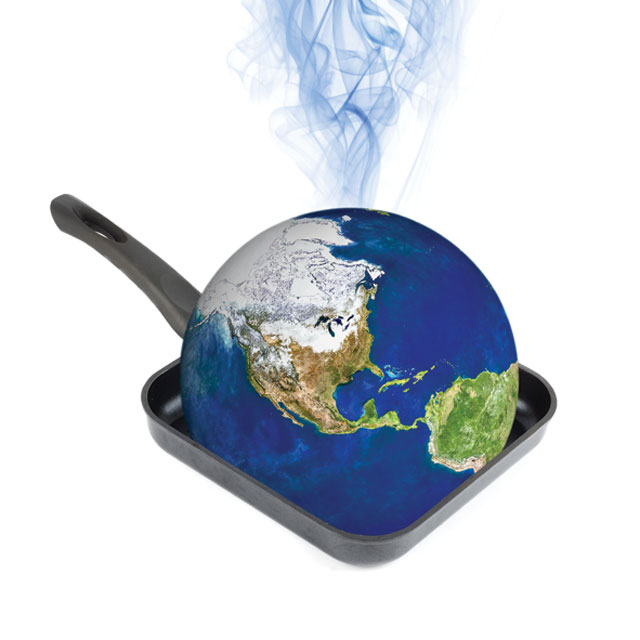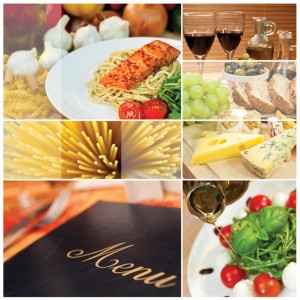 As we get seated in a restaurant, the first thing we’d expect is the menu. Flipping through, have you ever felt that some menus are rather confusing; whether in terms of types of food or its creative design? Or silently applauded the restaurant which was able to present a menu that you ‘got it’ at first look? A menu functions as a communication tool between the kitchen and the diner and it is one of the most important tasks for the chef and restaurateur to co-operate and co- ordinate. The reason for a menu is essentially to inform the crew of what is to be prepared and to let the diner know what is available. A menu should ideally contain information of each dish, its preparation method and cost (whether set price or seasonal price). Before planning the menu, it is imperative to note that there are a few kinds of menus.
As we get seated in a restaurant, the first thing we’d expect is the menu. Flipping through, have you ever felt that some menus are rather confusing; whether in terms of types of food or its creative design? Or silently applauded the restaurant which was able to present a menu that you ‘got it’ at first look? A menu functions as a communication tool between the kitchen and the diner and it is one of the most important tasks for the chef and restaurateur to co-operate and co- ordinate. The reason for a menu is essentially to inform the crew of what is to be prepared and to let the diner know what is available. A menu should ideally contain information of each dish, its preparation method and cost (whether set price or seasonal price). Before planning the menu, it is imperative to note that there are a few kinds of menus.
[unordered_list style=”bullet”]
- Set menu (table d’hôte) which comprises a complete meal of few courses offered at a set price. The number of courses will depend on the price; it could be a two, three or four course meal.
- A la carte involves picking a single dish from the menu which should be cooked when ordered thus involves some waiting.
- Specialty or ethnic could be presented with set or a la carte. Specialty can be taken to mean fish, pasta, vegetarian, desserts while ethnic offerings encompasses Chinese, Greek, Indian, Caribbean or any other food of a region.
- Function menus ought to involve foods that can be eaten by all guests simultaneously thus items that need to be prepared ala minute like steaks are not particularly suitable.
- Hospital menus give patients the flexibility to choose their preferred items by ticking on the menu card.
- At work menus are usually incorporated by large companies who provide meals at the workplace. Usually run by a sole operator, the menu ought to be rotated often or provide an ala carte option.
- Cyclical menu whereby the menu would be compiled to cover a certain period of time. A scenario: the management would usually compile menus in advance to minimise work when time comes and by the time the fifth menu’s rotation is complete, it is time to return to the first and diners would not complain of boredom either. This menu approach is widely used by industrial caterers where volume is the most important factor. It is preferred because of the time saving factor and if using cook/freeze operations, it also allows for production of certain items to last the whole cycle. By cutting down commodities held in stock, the management can have better cost control. Time and labour can also be more efficient. Cyclical menus have to be time sensitive especially if implemented at establishments of captive clients, rotated at a reasonable time before the clientele gets bored. At the same time, the kitchen might miss out on ‘offers’ that suppliers give on a regular basis unless such items happen to be needed for that particular menu cycle.
- Menus for children should be specially tailored to provide adequate nutritional needs and encourage healthy eating from a young age.
- Pre-designed menus are planned in advance according to customers’ preference and how each item affects the entire menu. One plans a menu to revolve around the kitchen’s equipment and capabilities. This type of menu also provides banqueting managers to instantly quote prices to customers plus quality control can be better maintained when the staff is familiar with preparing the similar item. Yet, this menu has limitations towards mass appeal as well as might bore the crew having to produce the same food often or limits the chefs’ creativity.
[/unordered_list]
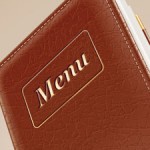 After determining the kind of menu you are going with, planning it takes form and it isn’t simply whipping up a menu according to a chef’s or restaurant owner’s fancies. Well, of course a little of it does; as a symbol of identity but there are other things to consider too.
After determining the kind of menu you are going with, planning it takes form and it isn’t simply whipping up a menu according to a chef’s or restaurant owner’s fancies. Well, of course a little of it does; as a symbol of identity but there are other things to consider too.
A SKINNY OR COMPREHENSIVE MENU?
This is a little tricky to navigate. Many restaurateurs want to capture as many audience group as possible, hence they tend to want to provide a menu of ‘everything’ but that is not wise in the long run because there will be too much wastage, and the possibility of needing to hire more workers to prepare various items. At the same time, you don’t want to seem limited in your choices. A suggested route to take might be to start small and expand according to your capabilities.
 WHERE IS YOUR ESTABLISHMENT?
WHERE IS YOUR ESTABLISHMENT?
Ideally the location is easy to access although some would not mind a far or difficult journey if the food is good but the regularity is likely affected. If you are setting up in an area well-known for a special local dish, you might want to include it into the menu. Speaking of location, the suitability comes into play. A fast-food joint in an affluent neighbourhood or a specialty restaurant in an average income class residential would definitely look out of place.
WHO ARE YOUR CUSTOMERS?
Prepare a menu that would appeal to the majority of your clientele. If patrons are mostly office workers, they are likely to want something quick and affordable. Whatever that is not extremely popular should also be taken off the menu. Value-for-money must be top of your consideration.
HOW MUCH SPACE DO YOU HAVE?
The menu must be able to accommodate the frequency of turnover in the establishment. Some foods take longer to prepare and eat; you would not want to have harried customers waiting impatiently for a space. If space is a concern, the menu could be adjusted to cope such as have self-service or a separate service for drinks. Aside from dining space, workspace is also to be looked at; there is no point offering items that a kitchen’s equipment cannot produce while certain equipments should not be overloaded.
 HOW IS THE STAFFS’ RESPONSE TIME?
HOW IS THE STAFFS’ RESPONSE TIME?
You must ensure that the crew is able to execute the items planned in good time to ensure customer satisfaction. They must be given a trial run before facing the real crowd.
WHO ARE YOUR SUPPLIERS?
It is advisable to have regular suppliers so that you can lock down the frequencies of items being delivered and be in the know of availability of produce to help plan the menu. Also, do you have storage space should you want to provide seasonal foods?
WHAT’S YOUR COST?
Goes without saying, this is an essential point if an establishment is done for profit. A menu that is poorly planned in terms of buying produce and not selling it at a profitable price or unable to achieve the volume (if prices are put lower) will not benefit the establishment.
THE CREATIVE SIDE OF MENU PLANNING

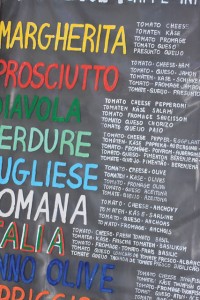
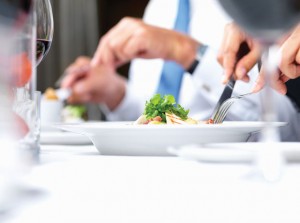 After the technical aspect is finalised, it’s time to present the menu in an attractive manner to the diners. The top rule is to keep the language simple; primarily this would be English and if the establishment focuses on regional cuisines like French, Spanish, Greek or others, it is important to have English descriptions to the items. When describing each item, refrain from using big words or conjuring imaginations of a diner before he / she even experiences it. Just state how the item will be cooked, what are the ingredients and a suggested wine pairing (if wine is part of your menu). Accuracy cannot be compromised when writing a menu. It may seem like a no-brainer but many establishments may not clearly describe how they do things and customers may have a differing perspective. For example, a customer may perceive ‘chicken chop’ to be grilled but the kitchen’s way is deep-frying it; that means customer satisfaction and expectations are unmet. Decide if the menu structure is according to course such as appetiser, mains, desserts, beverages or by type like soups, salads, poultry, seafood and such. Applying codes to items also help the staff to take orders faster or for restaurants that want the customers to write their own orders. A menu design should reflect the theme of the establishment and ambience to maintain the brand identity and keeping it recognisable. A loudly coloured menu is definitely not in line with a fine-dining or mid-range outlet.
After the technical aspect is finalised, it’s time to present the menu in an attractive manner to the diners. The top rule is to keep the language simple; primarily this would be English and if the establishment focuses on regional cuisines like French, Spanish, Greek or others, it is important to have English descriptions to the items. When describing each item, refrain from using big words or conjuring imaginations of a diner before he / she even experiences it. Just state how the item will be cooked, what are the ingredients and a suggested wine pairing (if wine is part of your menu). Accuracy cannot be compromised when writing a menu. It may seem like a no-brainer but many establishments may not clearly describe how they do things and customers may have a differing perspective. For example, a customer may perceive ‘chicken chop’ to be grilled but the kitchen’s way is deep-frying it; that means customer satisfaction and expectations are unmet. Decide if the menu structure is according to course such as appetiser, mains, desserts, beverages or by type like soups, salads, poultry, seafood and such. Applying codes to items also help the staff to take orders faster or for restaurants that want the customers to write their own orders. A menu design should reflect the theme of the establishment and ambience to maintain the brand identity and keeping it recognisable. A loudly coloured menu is definitely not in line with a fine-dining or mid-range outlet.
The menu planner is often, by default, the head chef. What a diner experiences is paramount in crafting the communication tool in a food establishment. What time does the establishment operate? Some places open for breakfast right up till dinner but puts a time cap on when customers can order certain food. Or serve food differently depending on time of day; for example, a quick set lunch of an all- in-one item plus a drink while dinner can take the form of a slow course-by-course structure. Time is a great element when it comes to dining experiences. A meal should also be one of nutritional balance therefore it would be ideal that the entire course fulfils a diner’s nutrition needs in each dish. It is also recommended to avoid repetition of commodities like basic ingredients such as peas, tomatoes or flavours (herbs and spices) in two courses that belong to one menu. Colours should also contrast yet complement, never the same shades in one platter and the same principle applies to textures – you wouldn’t want to eat mashed potatoes and pudding together, isn’t that so?
Some establishments work on the premise of ‘if it’s not broken, why fix it?” There is no refuting that, particularly for joints that have attained cult-like status and loyal customers who prefer the familiar. But eating trends are constantly changing, while the abovementioned still has its allure, it can be a smart move to innovate and put new touches to the menu; maintaining the favourites of your clientele which you would have observed over a period of time. The key to menu changing is a balance of old and new. And if there are seasonal specials, it is also appropriate to offer because limited time items tend to captivate diners; which also helps in your profitability.
In concluding, menu planning is definitely one of the earliest task to undertake when planning a food & beverage establishment because it has to fall in line with so many aspects – from the geographical factor, space availability, produce and ingredients, cost, business direction and most importantly, the customer. A well-planned menu, together with an execution according to abilities largely helps an establishment in sustainability and profitability.








